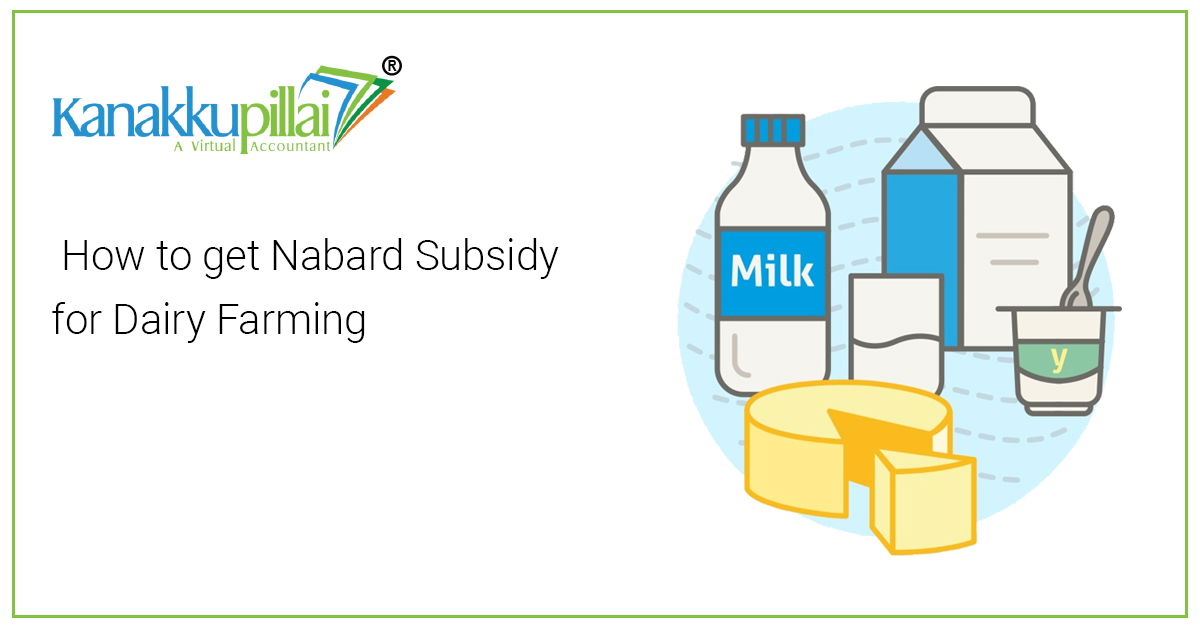As the milk and milk products industry is on an upward trend, dairy farming business is becoming a common livelihood source for farmers and businessmen alike. But to start a dairy farm involves heavy investment in animals, housing, fodder production and equipment. With an aim of sharing this burden, National Bank for Agriculture and Rural Development (NABARD) runs attractive subsidy schemes, which make dairy farming readily available to small and marginal farmers, self-help groups and rural entrepreneurs. The Dairy Entrepreneurship Development Scheme (DEDS) is one of the most sought-after and availed schemes among these.
In this article, we have discussed in detail how one can obtain NABARD subsidy on dairy farming, explaining the dairy farming subsidy scheme, who is eligible, what documents are required, the application procedure and useful guidelines for farmers.
The Significance of NABARD Subsidy in Farming
The upfront expenses of establishing a dairy farm might scare away numerous farmers who would like to get into this industry. The subsidies provided by NABARD are essential in the process of alleviating financial burden, as they contribute to the project cost by a certain percentage. Investments in quality cattle breeds, implementation of scientific methods, and the purchase of modern devices are facilitated by the subsidy. It will also make the farmers interested in growth of their dairy units, more milk production and creation of new rural jobs. Finally, NABARD subsidy programs help to intensify the dairy industry in India and reach milk production autonomy.
Dairy Entrepreneurship Development Scheme (DEDS)
Its prime subsidy scheme to promote dairy farming is the Dairy Entrepreneurship Development Scheme, which is conducted through NABARD. This scheme provides assistance to individuals, self-help groups, cooperative societies and companies in dairy activities.
Subsidy is limited under DEDS to twenty five percent of the project outlay in case of general category farmers and thirty three percent SC/STs. Activities under the scheme are varied, with the setting up of small dairy units using crossbred cows/buffaloes, establishing calf rearing centres, procurement of dairy equipment, construction of sheds, installation of bulk milk coolers and even establishment of processing units.
It has been a very successful scheme since it not only introduces new farmers to dairy farming, but also supports and helps the already existing farmers to modernise and extend their practices as well.
Eligibility Criteria for NABARD Dairy Subsidy
Certain requirements have to be met in order to enjoy NABARD subsidy. Eligible are individual farmers and self help groups, joint liability groups, cooperative societies and companies involved in agriculture or dairy activities. The SC/ST applicants, women entrepreneurs, and small and marginal farmers will be provided with preferences.
The applicant should be more than eighteen years of age and should not have already availed the subsidy of any such dairy activities under NABARD. NABARD also offers technical and financial guidelines to be followed in the project.
Documents Required for NABARD Subsidy
When applying to obtain the subsidy, specialists need to acquire the necessary documents:
- An identity document like an Aadhaar card, voter ID, or PAN card is required.
- Address proof, such as a ration card or an electricity bill, is required. An elaborate dairy farm project proposal, such as details of the livestock, cost estimate, infrastructure layout, and estimates of the earnings, needs to be attached.
- Caste certificates are necessary for the benefits in the reserved category.
- The details of bank accounts are also necessary because the subsidy is passed via a financing bank.
- Where there is construction of land or sheds, ownership documentation or a lease agreement might also be required.
Application Process for NABARD Dairy Farming Subsidy
The process of availing NABARD subsidy under DEDS is as per a defined pattern:
- The farmer will have to develop a complete project report on dairy unit, investment and returns.
- This is the project report presented to a commercial, cooperative, or rural bank in connection with NABARD.
- The bank scrutinizes the project, ensures the viability and grants the loan.
- After the project is approved, it is forwarded to the NABARD, and the bank makes a grant application in that regard.
- The subsidy amount is released by NABARD and this is credited by the financing bank and offset against loan account.
- To facilitate the flow, the farmers should make sure that the project is practical and all documentation is correct.
Tips for Farmers Applying for NABARD Subsidy
Farmers must make note of a few things to increase success opportunities in availing NABARD subsidy.
- One should be able to develop a real and detailed project report which clearly clarifies costs, earnings and sustainability.
- The viability of the project is increased by the use of cancer-resistant and high producing cows of different breeds.
- Well-documented expenses, health and milk production of the cattle are eminently credible.
- Local veterinary doctors, agricultural officers or cooperatives of dairy farmers should also be consulted by the farmers in the design of their projects.
- Updating documents and strictly complying with the official instructions is the best way to prevent rejection or delays.
Conclusion
The dairy farming business has become accessible and rewarding through dairy farming subsidies by NABARD in rural India. Under the schemes such as the Dairy Entrepreneurship Development Scheme, this helps farmers to lower the investment incurred, use modern technology, and increase the production of milk. Farmers can readily exploit such subsidies by means of doing the eligibility test, drawing a healthy project report and even applying through logically labelled banks. Dairy farming, coupled with NABARD finance, has been a constant source of income, and it has contributed a lot to agricultural growth and rural development in India.





